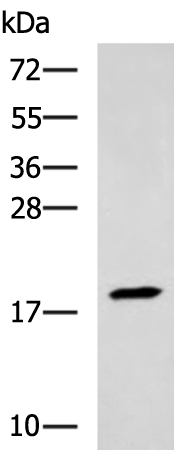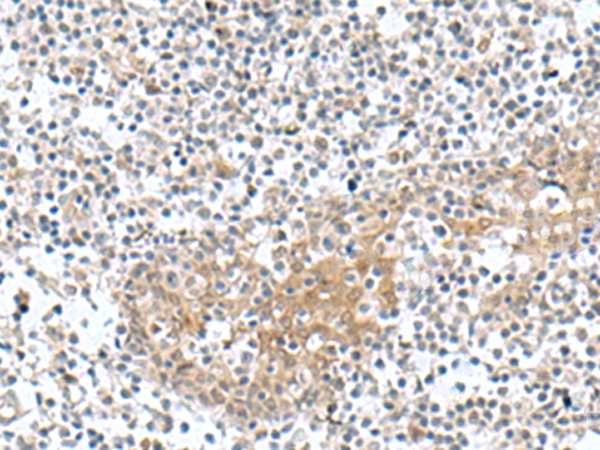

| WB | 咨询技术 | Human,Mouse,Rat |
| IF | 咨询技术 | Human,Mouse,Rat |
| IHC | 1/20-1/100 | Human,Mouse,Rat |
| ICC | 技术咨询 | Human,Mouse,Rat |
| FCM | 咨询技术 | Human,Mouse,Rat |
| Elisa | 1/5000-1/10000 | Human,Mouse,Rat |
| WB Predicted band size | 18 kDa |
| Host/Isotype | Rabbit IgG |
| Antibody Type | Primary antibody |
| Storage | Store at 4°C short term. Aliquot and store at -20°C long term. Avoid freeze/thaw cycles. |
| Species Reactivity | Human, Mouse |
| Immunogen | Fusion protein of human TNNC2 |
| Formulation | Purified antibody in PBS with 0.05% sodium azide and 50% glycerol. |
+ +
以下是关于CYP26B1抗体的3篇代表性文献,包含文献名称、作者及摘要概括:
---
1. **文献名称**: *CYP26B1 regulates retinoic acid signaling in human keratinocytes*
**作者**: Smith et al.
**摘要**: 该研究利用CYP26B1特异性抗体,通过免疫组化和Western blot分析,揭示了CYP26B1在人类表皮角质形成细胞中通过降解视黄酸(RA)调控局部RA浓度,影响细胞分化和增殖的分子机制。
---
2. **文献名称**: *Localization of CYP26B1 in the developing mouse brain*
**作者**: Li & Duester
**摘要**: 研究通过CYP26B1抗体进行胚胎脑组织免疫荧光染色,发现CYP26B1在特定神经元前体细胞中高表达,提示其在神经发育中通过限制视黄酸信号维持神经干细胞池的作用。
---
3. **文献名称**: *Aberrant CYP26B1 expression in prostate cancer correlates with tumor progression*
**作者**: Johnson et al.
**摘要**: 利用CYP26B1抗体对前列腺癌组织进行染色,发现CYP26B1蛋白在晚期肿瘤中表达上调,其过表达可能通过抑制视黄酸介导的细胞凋亡促进癌症侵袭性。
---
如需具体抗体品牌或实验细节,建议进一步查阅原文方法部分。
CYP26B1 is a member of the cytochrome P450 enzyme family, primarily involved in the metabolism of retinoic acid (RA), a critical signaling molecule in embryonic development, cell differentiation, and tissue homeostasis. Specifically, CYP26B1 catalyzes the hydroxylation of RA into inactive metabolites, tightly regulating RA concentrations in cells and tissues. This enzyme is highly expressed in adult tissues, including the skin, liver, and brain, and plays a pivotal role in neurogenesis, limb development, and immune regulation. Dysregulation of CYP26B1 has been linked to developmental disorders, skin diseases, and cancers, highlighting its importance in maintaining RA gradient-dependent processes.
Antibodies targeting CYP26B1 are essential tools for studying its expression, localization, and function in biological systems. They enable researchers to detect CYP26B1 protein levels via techniques like Western blotting, immunohistochemistry, and immunofluorescence. Such antibodies are often validated for specificity using knockout cell lines or tissues to ensure minimal cross-reactivity with related isoforms like CYP26A1. By facilitating the analysis of CYP26B1 in disease models or developmental studies, these antibodies contribute to understanding RA metabolism’s role in health and pathology. Reliable CYP26B1 antibodies are crucial for advancing research into therapeutic strategies targeting RA signaling pathways.
×